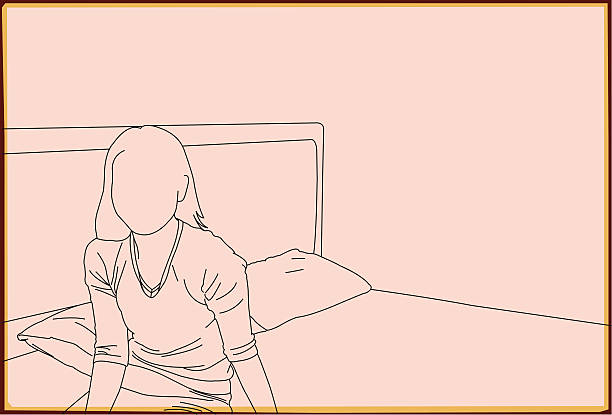My mother is a particularly tiny woman. Only in standards of physical size, though. Her spirit could match the mightiest person you know. Which is why the manner in which she sits on her bed instantly became a matter of great curiosity (and inescapably humour) for yours truly.
For years now, I have been playfully mocking my mother’s way of sitting on her bed. She sits right on the edge in a way that inevitably makes half of her body dangle. I could have rationalised this if the bed was small or if she was a bigger woman.
Still, since the case is neither, I could never quite understand this particular positioning of oneself at a time that was partitioned as leisure. To furnish visual proof to justify my perplexity, please refer to the following image of my mother relaxing:
On my coaxing, she would sometimes reluctantly move into the bed, but only enough to still be able to maintain her position of being right on the edge. This scene has played out multiple times a day, for several years, between my mother and me.
This model, therefore, furnishes a theoretical framework to understand the different ways in which the subtle structures of sexism in our society help to confine, position and inhibit the particular female body in question
It led me to it eventually, as I set out on an academic enquiry to understanding the gendered embodiment of space and spatiality. It expressed the resistance to ‘make full use of the body’s spatial and lateral possibilities‘ that I had set out to capture as evidence of patriarchal models altering gendered bodies’ interaction with their space.
Growing up in a quintessential joint family, my mother seemed to have quietly absorbed the essence of surviving in the world as a ‘good woman- occupying as little space as possible‘. In stark contrast to the male members of the family, the women seemed to move with something that could only be defined within Iris M. Young’s model of Inhibited Intentionality, which characterises the correlation between sets of possibilities/intentions and systems of frustrations and hesitancies.

These characteristics were sharply, and painfully, visible when looked at carefully. A tendency to use as little space as one could, even when alone and enjoying a moment to oneself, seemed to characterise the way my mother and her female relatives interacted with their immediate space.
Young’s descriptions of the feminine body reaching towards an “I can” and restricting itself with an “I cannot” at the same time, carefully illustrates the gendered hierarchies at play within the family that conditions the inhibitions that manifest in different ways today.
As such, locating my mother in the socio-familial context that moulded her gendered existence, makes it easier to reflect on the spatial confinement of gendered bodies instead of seeing them as a ‘failure’ to reach their full potential
Despite my mother being her own woman in every sense, this is one sphere where her feminist sensibilities seem to take a back seat. However, to borrow words from Young, “the particular existence of the female person is no less defined by the historical, cultural, social, and economic limits of her situation.”
This model, therefore, furnishes a theoretical framework to understand the different ways in which the subtle structures of sexism in our society help to confine, position and inhibit the particular female body in question.

Being both the object and the subject, as Young argues, has encouraged the feminine body to commit a series of invisibalising rituals to avoid objectification. There seems to be no place for ‘free, active, open extension and bold outward-directedness’, while doing so.
As such, locating my mother in the socio-familial context that moulded her gendered existence, makes it easier to reflect on the spatial confinement of gendered bodies instead of seeing them as a ‘failure’ to reach their full potential.
Author’s Note: My mother was the first person to see this article. She has still not changed the way she uses her own furniture but now promptly uses the term ‘inhibited intentions’ to counter my jokes.
About the author(s)
Muskan is a socio-economic researcher interested in women studies. She is working as a Research Associate at a consultancy focusing on the informal economy. She believes a better world is coming.





Interesting observation!
In any gathering a secret game of mine has been to observe the way men and women sit and make up stories of what their posture speaks about them! And inevitably the woman will sit all closed up so as to take up as little space as possible. And the man will sit with legs apart claiming the space and pretend to be the king..
Love what you write and love your observations even more!!!!!
Keep up the work!
Very interesting analysis Muskan. Something that all women should pay attention to. Even in ‘neutral’ and public places like public transport/airlines, women are expected to occupy less space than men…I would attribute it to size but clearly its more than that!